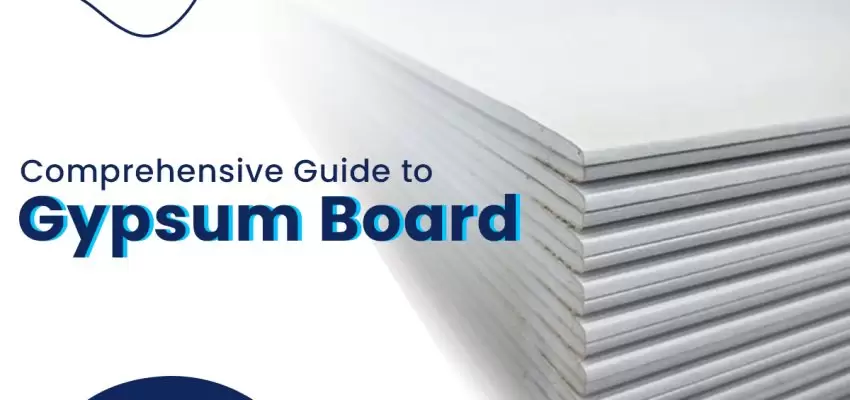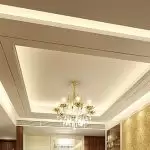Known as drywall or plasterboard, gypsum board has become a vital building material in residential and commercial projects. Its simple installation and smooth finish make it a popular choice for beautiful interior walls.
Post your Requirement
The Gypsum board comprises a hardened gypsum plaster centre sandwiched between two layers of sturdy paper. The gypsum core offers beneficial properties like fire resistance, moisture resistance, sound dampening, strength, and workability. Gypsum board panels come in varying dimensions and thicknesses to suit different applications.
Whether renovating or constructing from scratch, gypsum board is the go-to for sturdy walls. It’s the quiet hero of interior construction, delivering an effortless yet powerful solution for transforming living spaces into cosy retreats.
This comprehensive guide explains everything about gypsum board – from its composition and advantages to pro tips for installation best practices that actualize optimal results. In a nutshell, gypsum board ticks all the boxes for an interior wall finishing material that balances performance and aesthetics.
Benefits of Using Gypsum Board
Below we have mentioned the advantages of using gypsum board:
-
Fire-resistant – Gypsum contains chemically bound water that gets released as steam when exposed to fire, delaying flame spread.
-
Smooth, seamless finish – Allows for decorating with paint, wallpaper, and textured finishes when properly installed.
-
Sound dampening abilities – Significantly reduces noise transmission between rooms
-
Moisture-resistant options are available – Suitable for high-humidity areas like bathrooms and basements.
-
Affordable and versatile: Easy to install and finish. Also, it can be used on walls, ceilings, curves, and arches.
Types of Gypsum Board
Gypsum board is available in various types, each made to cater to specific needs and requirements:
-
Regular gypsum board – For regular interior rooms
-
Moisture-resistant – For kitchens, bathrooms and laundry areas
-
Fire-resistant – Where extra flame retardance is needed
-
Soundproof – Special sound-dampening boards reduce noise transfer
-
Lightweight – Weighs less than regular gypsum boards
-
Mobile home – Approved for use in manufactured houses
-
Ceiling boards – Designed to span joists above
Top Brands to Consider
When selecting gypsum board, consider choosing quality brands like
Steps to be Followed While Installing Gypsum Board:
Proper techniques are vital for a smooth, flawless gypsum board installation:
-
Prepare the Work Area: Clear mounts, and outlets; fill uneven spots on walls
-
Measure and Cut: Mark studs; measure and cut boards to the required size
-
Mount the Boards: Apply in sequential order; screw boards into studs lightly
-
Seal the Joints: Tape joints; apply thin coats of compound; let dry
-
Sand and Finish: Sand once dry; apply final coats; smooth edges
-
Prime and Paint: Prime surface; paint per manufacturer’s directions
Expert Tips to Remember
Successfully installing a gypsum board requires attention to detail. Here we have listed out some expert tips to ensure a seamless installation:
-
Store boards flat on a smooth surface to prevent warping
-
Position boards vertically with seams offset from those behind
-
Ensure boards are adequately screwed into studs to prevent sagging
-
When finishing seams, feather out the edges of the joint compound to minimize visibility
-
Allow sufficient drying time between coats of joint compound
-
Thoroughly sand joint compound before priming and painting
-
Use corner beads on outside corners for clean, sharp edges
-
Seal all penetrations like outlets with acoustical caulk (for soundproofing)
Common Mistakes to Avoid While Installing Gypsum Board
Here we have discussed some of the common mistakes to avoid while installing gypsum board:
-
Not screwing boards frequently enough into framing
-
The uneven joint compound application between boards
-
Failing to finish inside corners properly
-
Skipping sanding steps leads to visible seam edges
-
Using regular compounds in moist areas leads to deterioration
-
Not planning the layout adequately results in mismatched seams
-
Forgetting the vapour barrier allows moisture damage over time
Maintenance Tips
Maintaining gypsum board walls is quite simple. Here we have mentioned some tips to keep them in excellent condition:
-
Avoid exposing gypsum board to excessive moisture
-
Promptly repair any cracks, holes, or damages using joint tape and compound
-
Clean dust and dirt from walls with a soft cloth or vacuum
-
Check for leaks or signs of water damage to prevent deterioration
-
Paint walls regularly to maintain a fresh appearance and conceal flaws
Conclusion
Gypsum wallboard stands out for its versatile properties that enable ideal wall finishes. It allows contractors and homeowners to achieve smooth, flawless drywall surfaces customized to their requirements. Gypsum board ticks all the boxes – it can improve fire safety, dampen sounds, resist moisture, and look aesthetically pleasing. This makes it a premier wall-finishing material for residential and commercial spaces. When installed correctly per expert guidance, while avoiding mistakes, gypsum wallboard delivers durable, high-performance drywall finishes. By additionally sticking to maintenance best practices, you can unlock the gypsum board’s full potential for long-lasting, visually appealing walls. The unmatched flexibility of gypsum board grants the means to tailor drywall finishes to specific needs regarding fire protection, acoustics, humidity resistance, and visual appeal.
FAQs
Q-1. What is the difference between drywall and gypsum board?
A-1. Drywall is a generic term for wall panelling; gypsum board specifically refers to panels made from a gypsum core sandwiched between paper.
Q-2. Is it possible to install a gypsum board on uneven wall surfaces?
A-2. Yes, shims or furring strips can create an even surface on uneven walls for installing gypsum board.
Q-3. What is the typical drying time for gypsum board joint compound?
A-3. The joint compound used with gypsum board usually takes 24 to 48 hours to fully dry under normal conditions.
Q-4. Can exterior walls be finished with gypsum board?
A-4. No, gypsum board is designed for interior use; exterior walls require weather-resistant finishes like cement board or siding.
Q-5. Is there a type of gypsum board suitable for high-humidity bathroom installations?
A-5. Yes, the gypsum board resists moisture and mould growth, making it appropriate for high-humidity bathroom walls.























Post A Comment